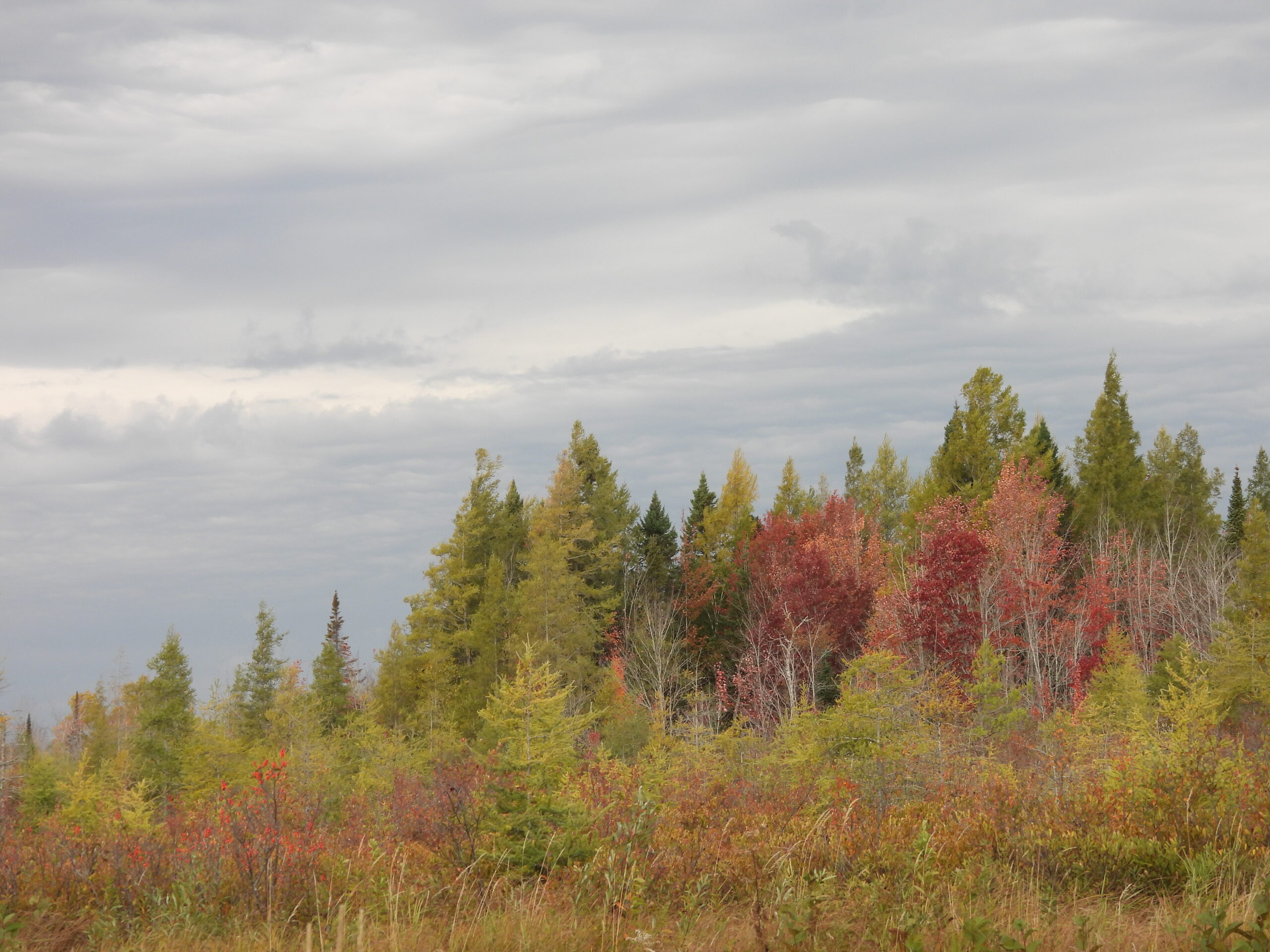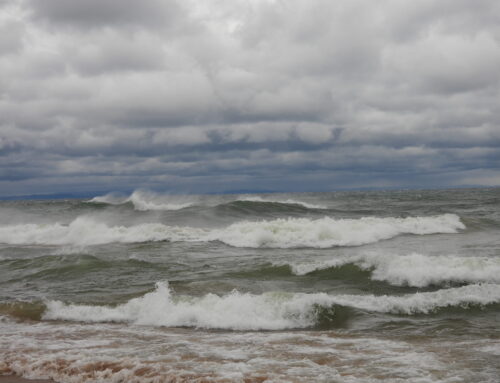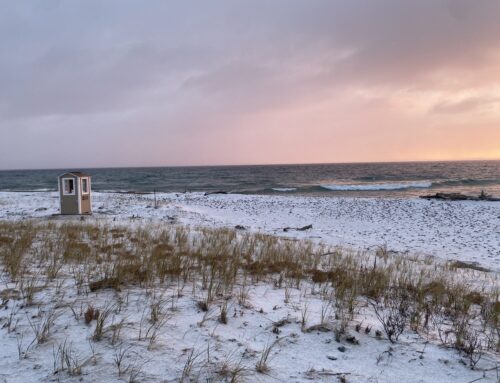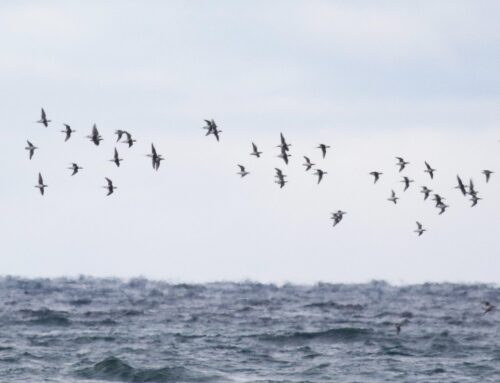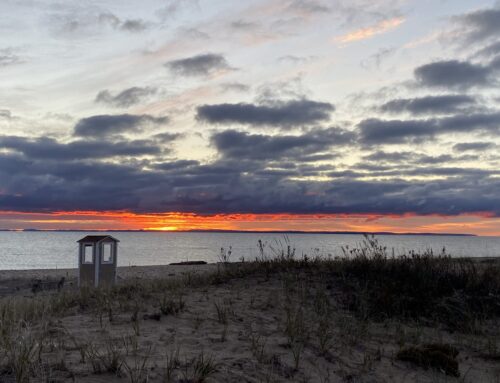This week on the waterbird count, we had it all. There were big flights of diving ducks, a trickle of scoters and Long-tailed Ducks, three different Sabine’s Gulls, Harlequin Ducks, and a thrilling Whitefish Point rarity!
The first of two great Aythya flights this week was on the morning of 10/8. It was our third consecutive day of north winds. Sometimes in these weather events with multiple days of favorable conditions, the best flight occurs on the first day that the wind switches directions. I suspect this is because many birds are backed up and waiting for the conditions to change. Then, on subsequent days, there are not as many birds ready to move following that initial push. Still on the 8th, we had 2,000 diving ducks consisting of many Greater Scaup and Redhead. With the Aythya that morning, we also had our first push of Red-breasted Mergansers (300 birds), a decent flight of Northern Pintail (100 birds), and about 100 scoters (75% White-winged, 25% Surf).
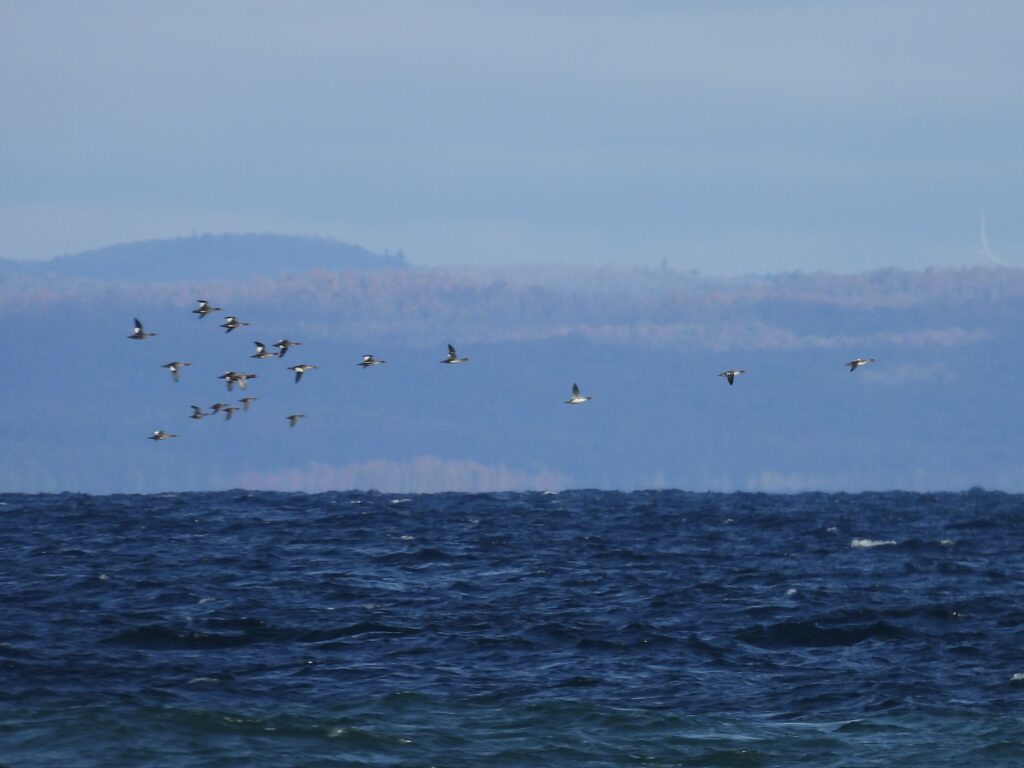
Mixed flock of Red-breasted Mergansers, 5 Green-winged Teal, and one Redhead. Photo by Frank Fabbro
On October 9th, a day with light south winds and not much else happening, I had our fourth juvenile Sabine’s Gull of the season. It flew out of Whitefish Bay and past me at the tip of the point. Then with surprising speed, it moved far out into the lake and started to hover and snatch food from the surface. Later in the week, we had two more juvenile Sabine’s Gulls flying around and feeding. I find it interesting that four of our six Sabine’s this season flew past in October, when September is often considered the better month for them.
The second big Aythya flight of the week occurred on the 10th and seemingly came out of nowhere. The morning had 20mph south winds with driving rain that kept me tucked in the lee of the waterbird count station. Those conditions were actually preferable to the afternoon when the wind calmed to 10mph and shifted to the southwest while the rain intensified, instead pouring directly down. It was a challenge to keep optics clear of raindrops with all of my lens clothes, towels, and sleeves soaked through. But from a slow morning, that slight shift in wind seemed to kickstart an unexpected afternoon flight. Line after line of ducks emerged from the gray ether between the downpours of passing rain squalls. The lines of ducks balled up and stretched out like an accordion moving across the sky. All the while, they flapped furiously into the headwind. In just a short while, I had 1,600 Aythya pass alongside a push of Mallards (56) and American Wigeon (110). For such a fun afternoon, my mood was soured slightly in the last hour of the count as a small gray shorebird flew by and quickly dropped onto the water. This could mean only one thing: a phalarope, but the winds were whipping up such troughs and whitecaps that I quickly lost sight of the bird. Sadly, this one got away without good enough views to narrow it down to a Red-necked or Red Phalarope, with both being rare but possible birds at the point in early October.
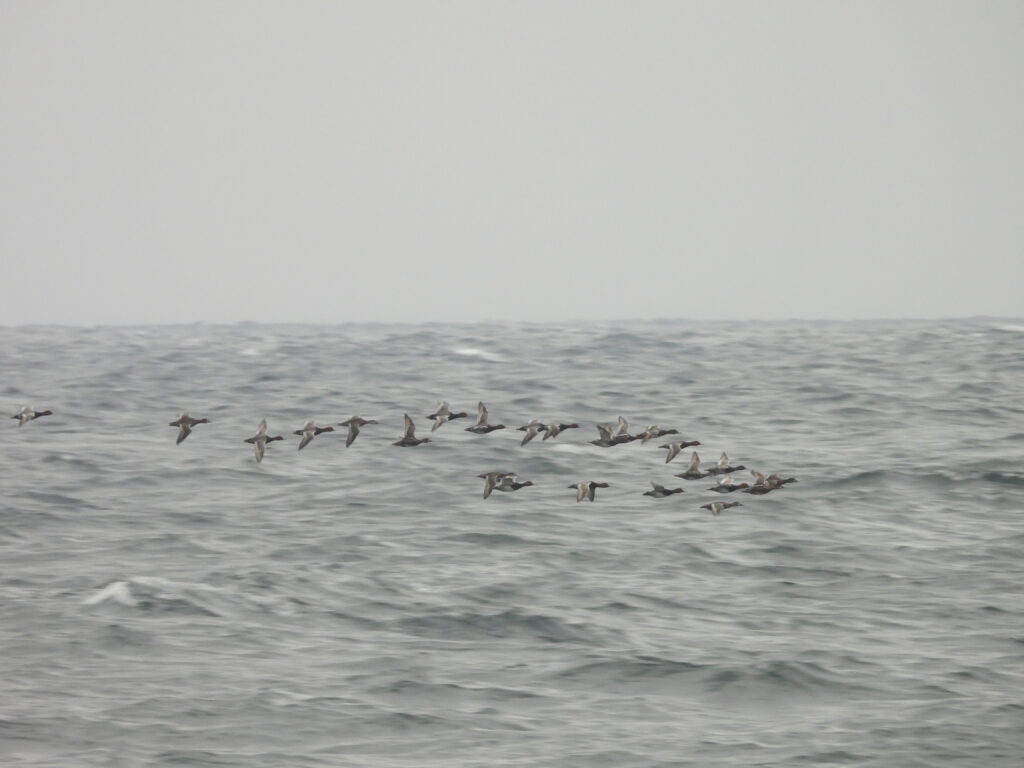
Redhead flock. Photo by Frank Fabbro
Besides the phalarope, things have been strikingly quiet for shorebirds in the first two weeks of October. This month on the beach, we have observed just a single Sanderling, one Pectoral Sandpiper, and a couple of American Golden-Plovers. We did have a flock of six Dunlin fly past, but hopefully this late-season migrant will start landing along the sandy shores. The hundreds of yards of shoreline and pond that no longer exist surely provided more stopover habitat to attract and hold birds. I don’t know if these numbers are typical for early October, the result of local habitat modification, the result of global shorebird declines, or some combination of factors is to blame for the scarcity of sightings.
October 11th started with a modest waterbird movement. We had 70 scoters go by (1/3 Surf, 2/3 White-winged) and later our first 2 Harlequin Ducks of the season. We are also now getting a couple of small Long-tailed Duck flocks. Our first flock appeared back on October 1st, and still we are seeing just a couple flocks (10-30 birds) most days. The moderate NE winds also produced a mostly unremarkable loon movement, until the last 40 minutes of the count.
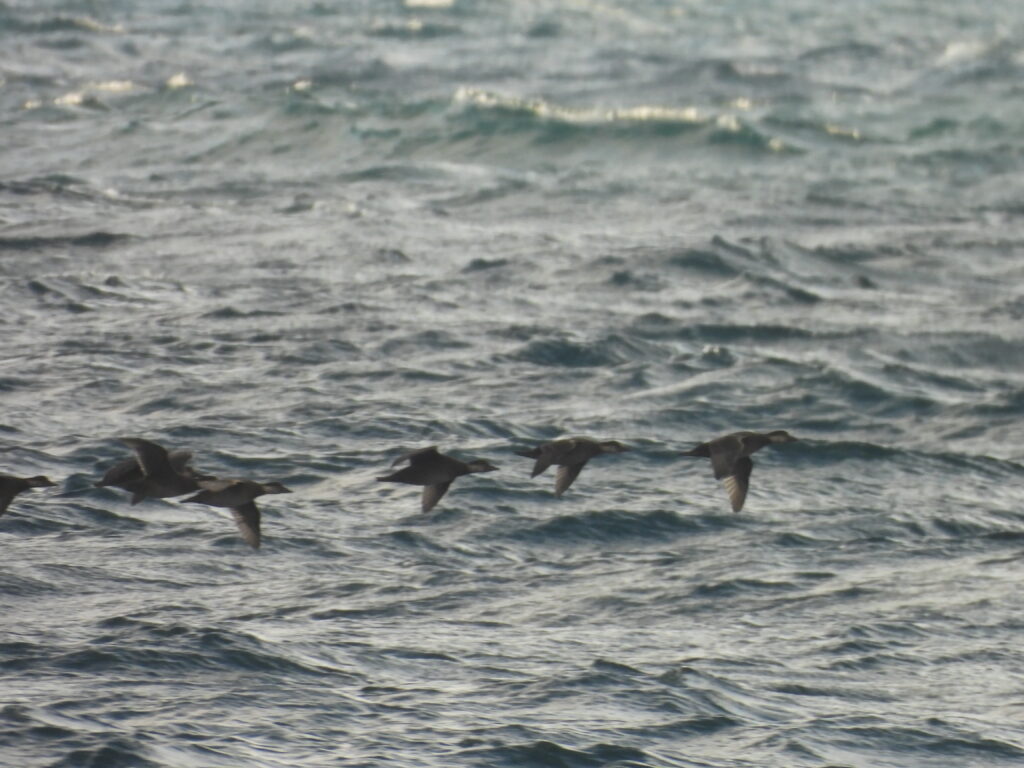
Our first Black Scoters of the season. Photo by Frank Fabbro
Late afternoon at the waterbird count can be really slow, but sometimes those dull moments are when the metaphorical lightning strikes. On this particular afternoon, I was out at the count with Clay and three other lucky birders. Clay called out a weird loon that was flying low over the water as it moved out of the dunes and in our direction. I got on it and said something to the effect of “Whoa, could that be…” not finishing the thought as I started snapping photos. I watched in the scope as a massive breeding plumage loon with a gleaming yellow bill paralleled the beach and flew onwards out into the middle of the lake. We were still in shock about what had just happened, but there was no mistaking that the massive loon with a yellow bill was, in fact, a Yellow-billed Loon. It wasn’t just the bill color but the distinctive thickness and upward angle to the bill, and the bold white checkered pattern on the back. Yellow-billed Loons breed in the far northern reaches of the Arctic and typically winter in marine habitats along the North Pacific, with small numbers wintering annually in the interior of the United States. Michigan has two previous accepted records of the species but typically, the inland birds are detected much later in the fall or winter. It’s remarkable to have a breeding plumaged bird in the Great Lakes, but interestingly, our sighting comes at a very similar date to a 2011 report of a bird on Lake Ontario.
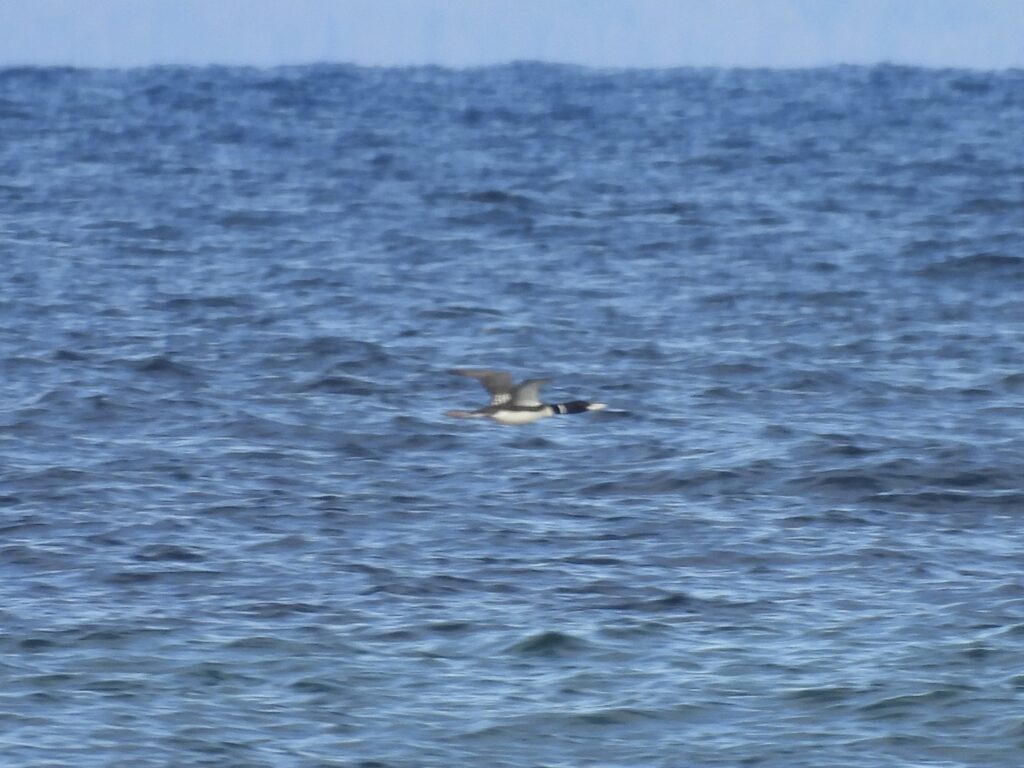
Yellow-billed Loon. Photo by Frank Fabbro
What followed on the 12th and 13th were two days of low movement and strong South winds. Another cold front was predicted to roll through on the 14th with winds flipping 180 degrees and blowing out of the NW at 20mph. Just to show how hard it is to predict bird movements, these textbook waterbird flight conditions produced only a mediocre movement with a couple of hundred Aythya and ~120 scoters. Outside of waterbirds, I had two Short-eared Owls and a Short-eared/Long-eared Owl flying off of the lake during the count this week. The question remains, where are our scoter flocks! Hopefully, some big numbers will be on the move soon.
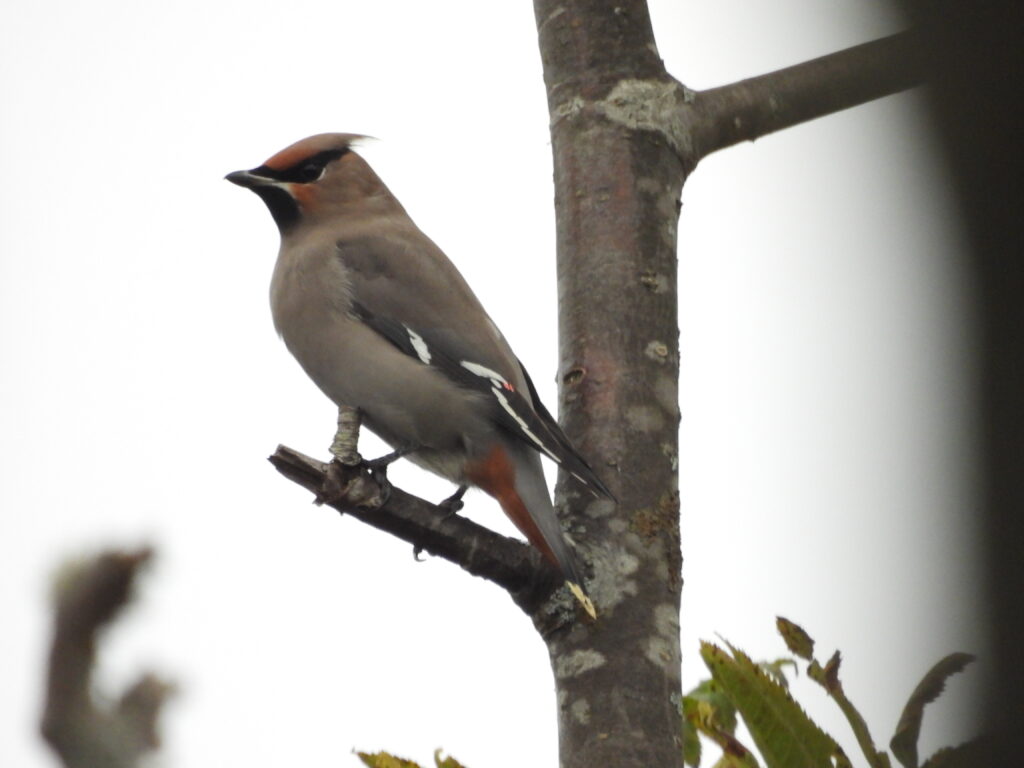
Bohemian Waxwing. Photo by Frank Fabbro
~Frank Fabbro, 2025 Fall Waterbird Counter
Featured Photo: Fall colors
You can now see the waterbird count data on Trektellen! Check it out at trektellen.nl/count/view/4209.
You can keep up with the 2025 Fall Waterbird Count by reading Frank’s weekly blog posts and following WPBO’s social media (Facebook, Instagram, and X). The fall waterbird count runs August 15 through November 15.
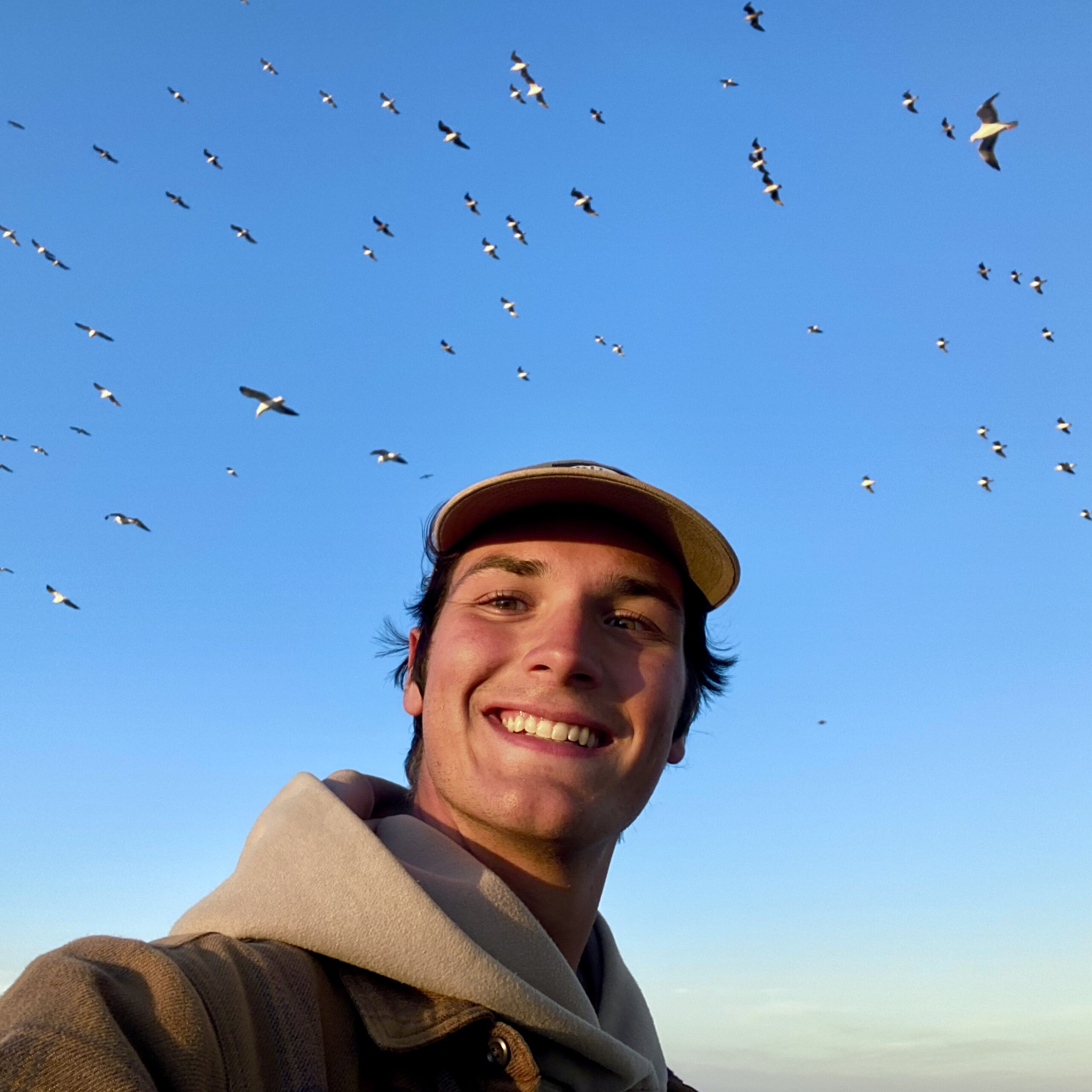
Frank Fabbro: 2025 Fall Waterbird Counter
Frank is an avid birder who was first introduced to the spectacle of bird migration along the Mississippi Flyway in his home state of Minnesota ten years ago. Since then, he has pursued his passion for birds, and the amazing places they inhabit, across the country and around the world. He studied Wildlife Biology and Landscape Restoration at the University of California, Davis, and since graduating has worked on a variety of bird-related projects, ranging from Spotted Owl surveys to prairie-chicken tagging and counting migrating seabirds. He’s excited to be back in the Northwoods, once again experiencing the excitement of fall migration along the shores of Lake Superior.

